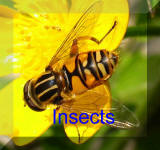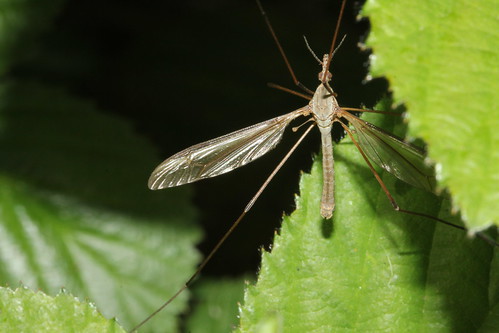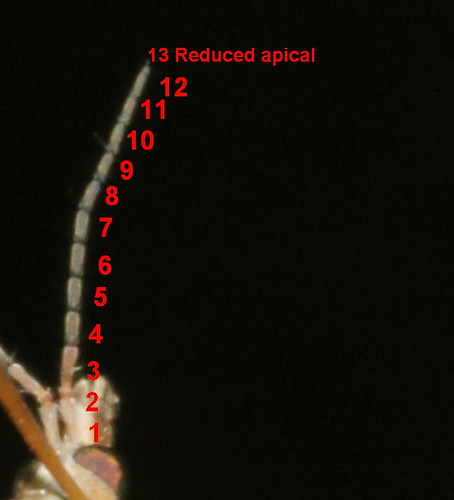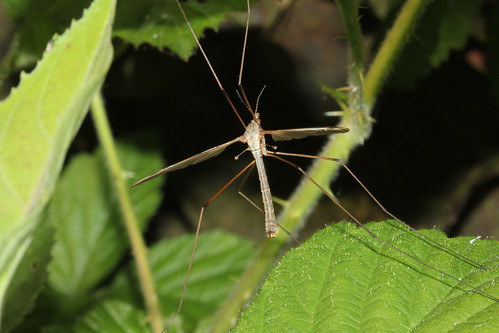Classification Order: Diptera – true flies Family: TipulidaeLength .
Phenology A early flyer, found from April to June. One of the Commonest Craneflies seen
Identification Cranefly with a brown front edge and a brown stigma to its wings. similar to Tipula paludosa but in T. oleracea the female's wings are as long as the abdomen. Also, T. oleracea has 13 antennal segments whilst T. paludosa has 14 Females are a little easier to fifferentiate - in T. oleracea the female's wings are as long as the abdomen.
Males slim slim with squared off or club shaped abdomens.
Females plumper when gravid and pointed ovipositer for insertiing eggs into soil
Life Cycle
Eeggs are are depositted into soft ground and the larvae are the well known terrestrial 'leather jackets' - brown legless grubs which spend their time below ground eating the root systems of grasses and root crops. After a shower of rain they often come close to the surface and fall prey to ground feeding birds, particularly Starlings. Adult craneflies generally do not feed taking only small ammounts of nectar or pollen its lifetime, the main function of the adult form is to mateHabitat Damp grassland but also seen around habitation especially later in its season.




